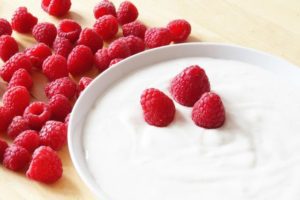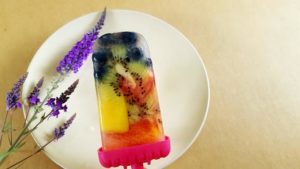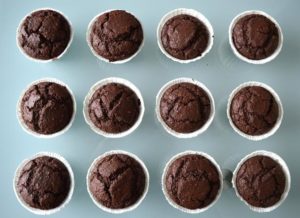Seven Super Snack Options for Summer
 The kids are out of school for summer and eating you out of house and home. You’d like them to not binge on junk food constantly, but the fruit in the fridge is going bad and the granola in the pantry will turn to dust long before they are willing to reach for it. There are a million and one lists of healthy foods on the internet, and most of them include options that would send my kid screaming into the hills (possibly followed by me and my husband.) The following is a list of possible snacks that most kids are willing to eat. (I say most because if you were lucky enough to have birthed the child willing to eat cottage cheese, peanut butter on celery sticks, and the like – you don’t need this list. Live long and prosper.)
The kids are out of school for summer and eating you out of house and home. You’d like them to not binge on junk food constantly, but the fruit in the fridge is going bad and the granola in the pantry will turn to dust long before they are willing to reach for it. There are a million and one lists of healthy foods on the internet, and most of them include options that would send my kid screaming into the hills (possibly followed by me and my husband.) The following is a list of possible snacks that most kids are willing to eat. (I say most because if you were lucky enough to have birthed the child willing to eat cottage cheese, peanut butter on celery sticks, and the like – you don’t need this list. Live long and prosper.)
Yogurt

Ah, yogurt. The snack item we try to sell to our kids as an ice cream alternative. They are not fooled, but depending on their texture tolerance, they may be willing to partake. A good source of protein and calcium, yogurt is a solid option for kids and provides calcium for their developing bones. Yogurts containing probiotics are especially good because of their benefit to digestion. (Klein K., 2008) Avoid the yogurt options with candy added and be sure to check the sugar content: some brands have multiple types of added sugar, even though marketed to children.
Popcorn
This whole grain is a healthy and filling snack option. Steer clear of the microwave versions (avoid the dreaded burned popcorn smell in your house) and buy an inexpensive air popper at the local grocery store. Not only is it cheaper in the long run, you get to skip all of the chemicals and preservatives. You can add a little butter or olive oil, sea salt, or parmesan cheese for flavor options. Popcorn can be a choking hazard to young children, so you may prefer to make it available when you know you’ll be close by.
Trail mix
If your child has a nut allergy, this one is not an option, but if your child is free from that danger, then trail mix can be a good snack choice. Many commercial trail mixes include candy, so a homemade version is healthier. A mix of nuts, pretzels, dried fruit, and whole grain cereal pieces can be a filling, low-sugar snack.
Frozen fruit popsicles
 In the summertime, who doesn’t love a nice, cold popsicle? Frozen fruit popsicles are one of the healthiest snack options around and kids can have a little fun making them. Skip the store-bought versions, which can be full of artificial colors and flavors, as well as various types of sugar. Put frozen fruit or berries and a small amount of fruit juice in a blender. After reaching the desired consistency, you can pour the mixture into a popsicle mold. (If your child will eat chunks of fruit, you can add some pieces to the puree before pouring it into the mold.) You can also make your own using paper cups and wooden popsicle sticks. Cover with plastic wrap and insert a popsicle stick into the liquid through the wrap. Freeze for several hours or overnight.
In the summertime, who doesn’t love a nice, cold popsicle? Frozen fruit popsicles are one of the healthiest snack options around and kids can have a little fun making them. Skip the store-bought versions, which can be full of artificial colors and flavors, as well as various types of sugar. Put frozen fruit or berries and a small amount of fruit juice in a blender. After reaching the desired consistency, you can pour the mixture into a popsicle mold. (If your child will eat chunks of fruit, you can add some pieces to the puree before pouring it into the mold.) You can also make your own using paper cups and wooden popsicle sticks. Cover with plastic wrap and insert a popsicle stick into the liquid through the wrap. Freeze for several hours or overnight.
Cheese
Everyone loves string cheese: it’s portable, easy, and tasty. Why is it a good option? Cheese is mostly made up of protein and fat, which help kids feel full in between meals. Full-fat dairy foods contribute to a child’s nutritional requirements for calcium, magnesium, and vitamins A and D. Another bonus: some studies suggest that children who eat cheese get fewer cavities! (Herod EL, 1991)
Raisin snack packs
Raisins are a convenient and healthy snack option. Raisins are dried grapes that retain almost all of the nutrients found in fresh grapes. They also contain a fair amount of iron, which is needed to transport oxygen throughout your body. Oleanolic acid is also found in grapes, which may protect teeth from cavities by preventing bacteria from adhering to them. (Wong A, 2013)
Healthier Chocolate Chip Muffins

Muffins get a bad rap for being high in calories, fat, and sugar. However, they can be a healthier snack than cookies and cakes while still providing that fresh-from-the-oven enjoyment. Reduce the sugar, use whole grain wheat flour, and substitute apple sauce to replace the fat in your recipe for a tasty, but less junk food-ish treat.
Works Cited
Herod EL. (1991, April). The effect of cheese on dental caries: a review of the literature. Retrieved from PubMed.gov: https://pubmed.ncbi.nlm.nih.gov/1877906/
Klein K., S. R. (2008). The clinical use of probiotics for young children. Retrieved from PubMed.gov: https://pubmed.ncbi.nlm.nih.gov/18512639/
Wong A, Y. D. (2013, June). Raisins and Oral Health. Retrieved from PubMed.gov: https://pubmed.ncbi.nlm.nih.gov/23789933/
